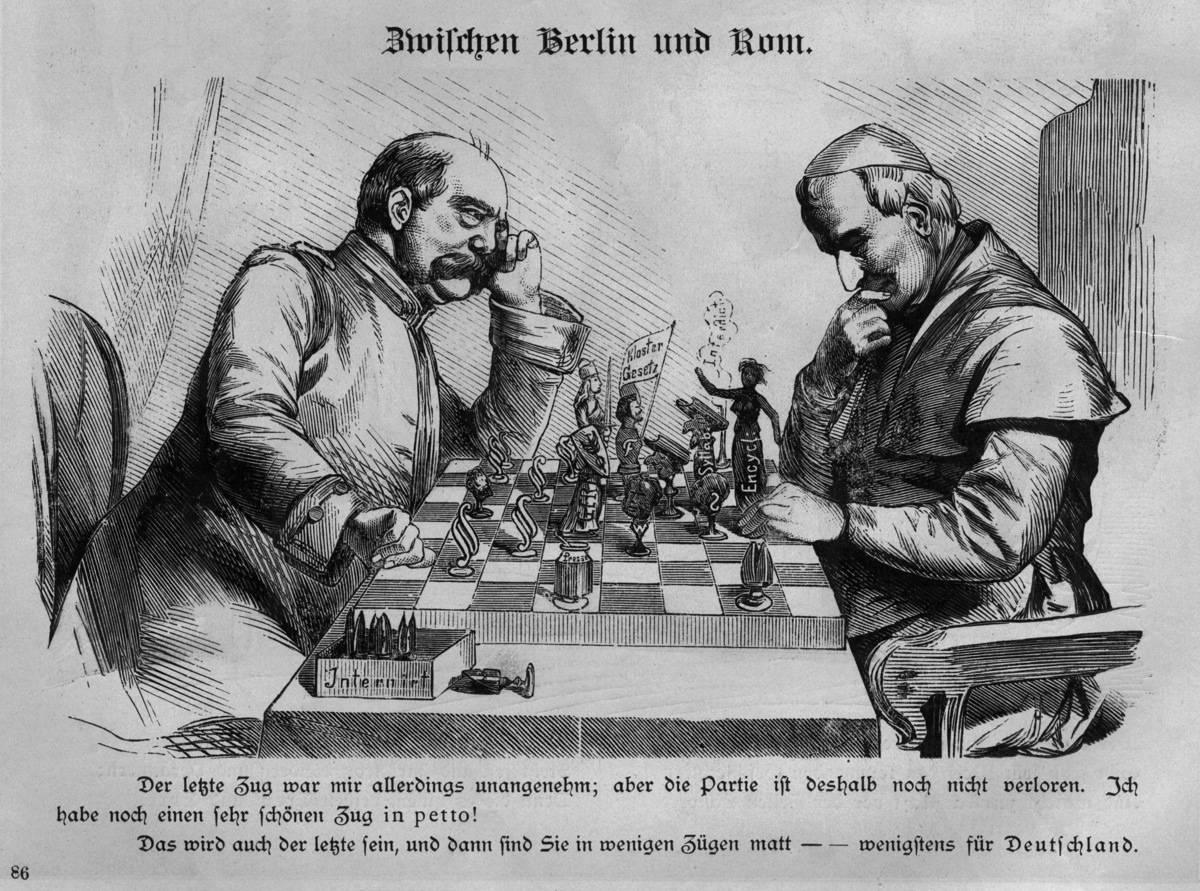Abstract
In 1875 relations between Prussia and the Catholic Church reached an
all-time low. In February of that year, the Pope had issued an
encyclical declaring that the
Kulturkampf laws issued by Prussian
Minister of Culture Adalbert Falk were invalid and non-binding on
Catholic priests. In response, the Prussian government began a campaign
to deprive all priests of government subsidies unless they provided a
written declaration that they would observe the law of the land. In the
caricature “Between Berlin and Rome” (1875), published in the satirical
journal Kladderadatsch, this
high-stakes conflict between church and state is depicted as a chess
game. The players are Bismarck and Pope Pius IX (1792–1878, elected
1846). The caption reads: [Pius IX]: “The last move was certainly
unpleasant for me; but the game is not up yet. I still have a very nice
move in petto!” [Bismarck]: “That
will be your last one, and then in a few moves you will have lost—at
least for Germany.” Next to
Bismarck’s right hand are papal chess pieces that have been “interned,”
representing Church possessions confiscated by the Prussian state.
Bismarck’s queen is Germania; another of his pieces is labeled “press,”
and his pawns bear the insignia of other legal paragraphs (§§) designed
to diminish clerical influence. The Pope’s resources include papal
encyclicals, syllabi (e.g. the Syllabus of Errors, 1864), and
excommunication. One of his pieces is marked “W” for the Center Party
leader Ludwig Windthorst (1812–1891).
